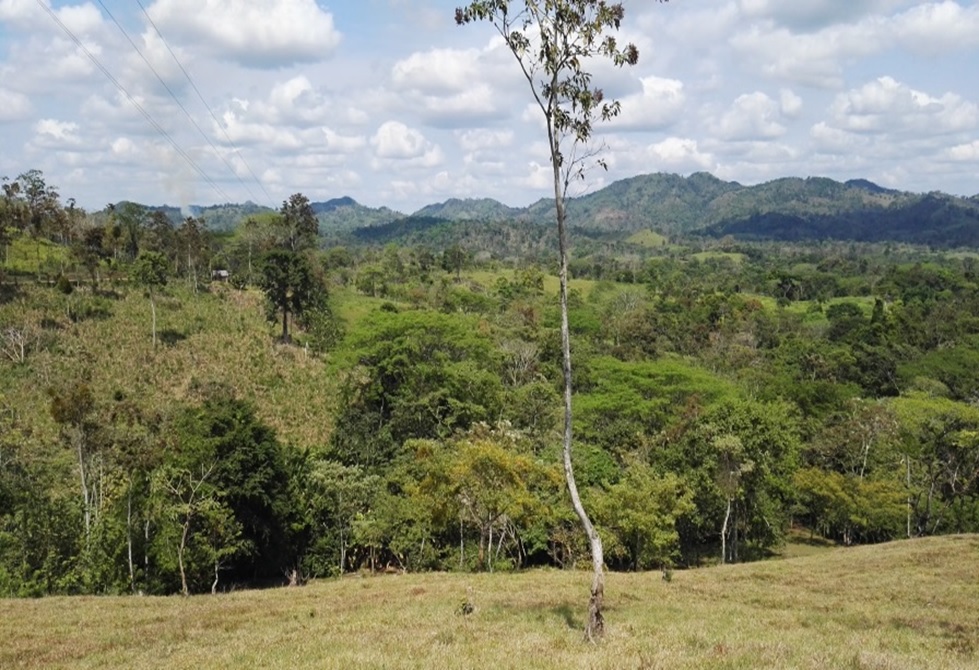IUFRO Spotlight #67 – Tapping the potential of restoring disturbed tropical forests
Since the 1980s most deforestation globally has occurred in tropical countries – Africa, South America and Asia. The high rate of deforestation and degradation contributes to the disappearance of 13 million hectares of tropical forests each year.

The effects of deforestation have, over time, led to immense areas of secondary and degraded forests.
This fall, at the 2019 IUFRO World Congress in Curitiba, Brazil a session entitled: Will active restoration of Secondary and Degraded Forests (SDFs) help to address sustainably the gap between wood demand and supply? will examine ways to address the challenge of restoration in secondary and degraded tropical forests.
The session, organized by Dr. Marie Ange Ngo Bieng and Dr. Plinio Sist, of CIRAD (Dr. Sist is also Coordinator of IUFRO’s Research Group Tropical and Subtropical Silviculture) and Dr. Bryan Finegan of CATIE, (and Deputy Coordinator of IUFRO’s Forest Biodiversity Research Group) will focus on restoring SDFs as a way to protect the remaining natural tropical forests and also as a way to address the growing gap between wood demand and supply in a sustainable fashion.
There are several partly overlapping definitions of secondary and degraded forests. Secondary forests are forests regenerating largely through natural processes after significant human and-or natural disturbance resulting in major differences in forest structure and-or species composition with respect to nearby primary forests on similar sites. More generally, a degraded forest delivers a reduced supply of goods and services from a given site and maintains only limited biological diversity.
The reasons for concentrating on tropical forest restoration are simple, Dr. Ngo Bieng said. Tropical forests are both crucial and endangered. They account for nearly half of the world’s forest ecosystems – 1,770 million hectares. They draw in carbon dioxide and emit oxygen and have, for good reason, been called the “lungs of the planet”.
Some 50-70% of species living in terrestrial environments are housed in those forests, which play a crucial role in providing, among other things, vital ecosystem services, drinking water, and woody and non-timber forest products.
And about 2/3 of that forest area is considered SDF, so restoring and utilizing SDFs in sustainable, productive ways makes a lot of sense.
“SDFs supply firewood and non-wood forest products but have rarely been considered for their potential for timber production,” Dr. Ngo Bieng said. “Although they have been heavily exploited in the past and currently are very poor in terms of commercial timber stocks, growing commercial timber trees in SDFs is possible, though variable, depending on local conditions.
“But,” she went on, “these tropical SDFs could contribute more to timber supply and forest environmental services. We propose concepts for sustainable timber production in SDFs in the tropics. It adds value to these types of often-neglected forests.”
Dr. Ngo Bieng said their session will look at three main things:
- the increase in future wood demand worldwide and the related urgent need to find alternative sustainable wood sources;
- the potential of SDFs in that context and the current challenges related to wood production in tropical SDFs in different countries; and
- case studies of active restoration associated with successful wood production and commercialization of timber in SDFs for higher value end products.
The session organizers recognize that there are significant challenges between them and a successful restoration initiative. Among them: re-establishing productive forest systems where there are serious biophysical limitations; initiating relevant silvicultural practices for effective restoration; weak institutional frameworks and-or a lack of sectoral policies; and competing visions of how the landscape should be used.
Dr. Ngo Bieng is hopeful that the “international context” which has underlined an increasing demand for wood products can provide opportunities to move forward. The increase in demand for wood calls for sustainable alternative wood production.
“The remaining logged and production forests will not, by themselves, be able to fulfill the increased demand for tropical wood products while also playing a major role in providing environmental services,” she said.
“We urgently need alternative sustainable wood sources.”
She noted that her colleague, Dr. Sist, is involved in the Tropical managed Forests Observatory (TmFO) initiative. “It’s a pan-tropical network examining the long-term effects of logging on tropical forest ecosystems.
“Their findings will provide policy-makers and foresters guidance in sustainable forest management and conservation of tropical forests. That knowledge will certainly be useful for the future management of productive SDFs,” she said.
See you at the IUFRO 2019 World Congress! Visit http://iufro2019.com/
Look out for #IUFRO2019 on Twitter and
XXV IUFRO World Congress 2019 on Facebook!
IUFRO Spotlight is an initiative of the International Union of Forest Research Organizations. Its aim is to introduce, in a timely fashion, significant findings in forest research from IUFRO officeholders and member organizations to a worldwide network of decision makers, policy makers and researchers.
View all IUFRO Spotlights at http://www.iufro.org/media/iufro-spotlights/

Leave a Reply